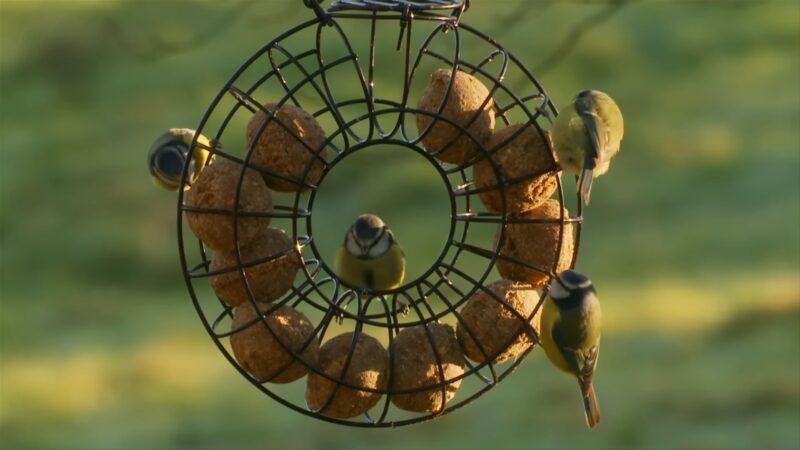Hey there, nature enthusiast! We’re about to embark on an exciting journey to create a harmonious bird habitat right in your own backyard. You might be thinking, “Why should I bother?”
Well, bird feeding is more than just a hobby; it’s a chance to connect with the wild and make a difference in our ecosystem. So, let’s dive right in and find out how to be the best avian host on the block.
Understanding Bird Feeding
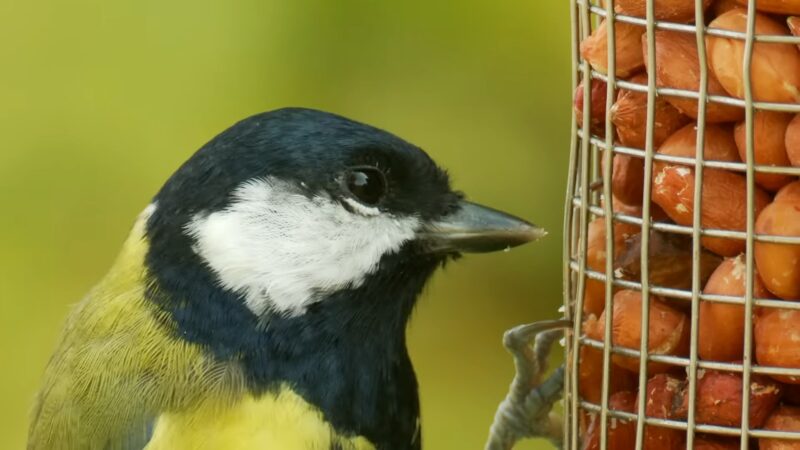
Okay, so why even feed the birds in the first place? Picture this: you’re sitting on your porch, sipping your morning coffee, and you hear a chorus of birds singing their hearts out. It’s like your own personal symphony! That’s just one of the many benefits of feeding wild birds.
The Benefits of Feeding Wild Birds
We’re not just talking about entertainment here. Bird feeding connects us with nature, offering a daily dose of tranquility. Plus, it’s a great way to introduce your kids to the wonders of the outdoors.
And how about the educational aspect? Birdwatching can be like a crash course in ornithology. You start to recognize different species, understand their behaviors, and marvel at their vibrant plumage. It’s like having a free biology class in your backyard!
But the best part? You’re actively supporting bird populations. Especially in urban areas, where natural habitats are dwindling, offering some quality bird seed can be a lifesaver. So, when you see those colorful feathers flitting around, you know you’re making a positive impact.
Ethical Considerations
Now, we’re not just throwing crumbs at them willy-nilly. Responsible feeding is all about their health and safety, which brings us to our next point.
1. Choosing the Right Feed
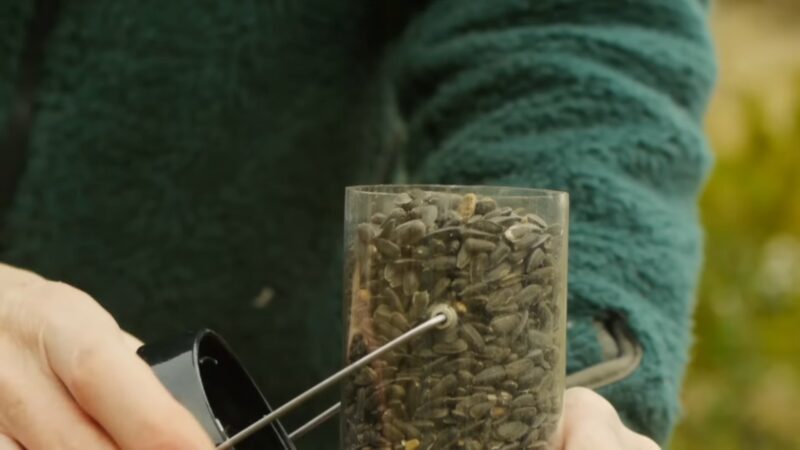
So, what’s on the menu? It’s not just any old birdseed. To be a top-notch bird host, you should serve up a variety of options. Think of it like a buffet for our feathered friends and get informed at https://www.foodforbirds.co.uk/.
Seed Types
First up, we’ve got the all-time favorite: sunflower seeds. These are like the pizza of the bird world – everyone loves them! Then there’s safflower seeds, a bit like the healthy salad option. Not all birds are into it, but some go crazy for them. And let’s not forget Nyjer seeds, the caviar for finches.
Offering a mix of these seeds caters to different species, so it’s like having options for vegetarians and carnivores at your BBQ.
Suet and Other High-Energy Foods
Sometimes, our avian buddies need an energy boost. Suet, essentially a fatty treat, is like a power bar for birds. Throw in some mealworms, and you’ve got the equivalent of an energy drink. It’s like having a little bird gym in your backyard.
Fresh Water Sources
You wouldn’t want to dine in a desert, would you? Birds need a drink, too! Fresh water is like the icing on the cake. It’s essential for their survival, and it completes the ultimate hospitality experience.
2. Feeder Selection
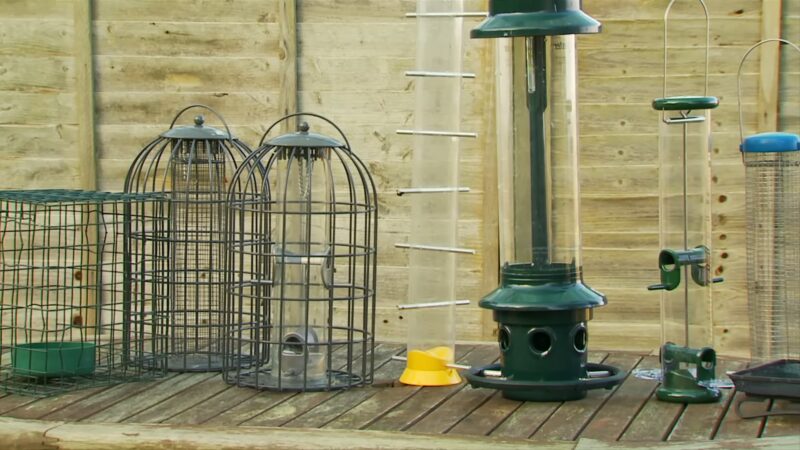
Now that you’ve sorted out the menu, it’s time to set the stage for the grand feast.
Types of Feeders
Think of feeders as your bird restaurant. Hopper feeders are like cozy cafés. Tube feeders are like a 24/7 diner, and platform feeders are the all-you-can-eat buffets. Each type attracts different birds, so you’re the host with a versatile menu.
Placement and Accessibility
Location is everything. Just like you wouldn’t put your TV in the bathroom (unless you’re into that sort of thing), don’t place your feeders in the wrong spot. Birds need a safe and accessible place to dine. Be mindful of predators and make sure they can easily access their meals.
While it’s important to maintain harmony in the habitat when feeding wild birds at home, it’s also fascinating to explore the diverse world of apex predators, each with its unique role in the ecosystem.
Maintenance and Cleaning
We get it, cleaning isn’t fun, but it’s essential. It’s like cleaning up after a big party – the mess won’t clean itself up. Dirty feeders can harm our feathered guests, so it’s our duty to keep their dining area spick and span.
3. Attracting a Variety of Birds
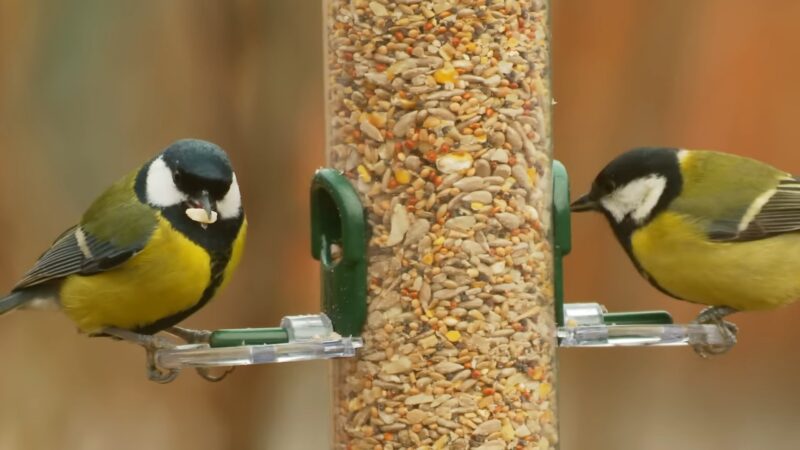
Let’s say you invited all your friends over for a BBQ, but only the pizza lovers showed up. Boring, right? The same goes for birds. If you want a diverse crowd, you need to diversify your offerings.
Understanding Species
They come in all shapes, sizes, and preferences. Do a little research and tailor your offerings to suit different species. You’ll be like the host with the perfect playlist for every guest.
Creating Habitat Diversity
Birds are creatures of habit. If you create a bird-friendly environment with trees, bushes, and nesting sites, you’ll be like a real estate mogul for our feathered friends. They’ll stick around and become your regular customers.
Regional Considerations
Think of your location as your theme. If you’re in a colder region, provide high-energy foods for those winter months. If you’re in a warmer climate, focus on fresh water sources to quench their thirst.
4. Feeding Etiquette
Imagine going to a restaurant with dirty utensils and pests running around. Not very appetizing, is it? Birds deserve a clean and safe environment, too.
Cleaning and Sanitization
Regularly clean your feeders and water sources. You don’t want to serve a meal on a dirty plate, right? Cleanliness is key to keep our avian friends healthy.
Avoiding Pests
Just like no one wants ants at their picnic, birds don’t appreciate unwanted guests. Use squirrel baffles, and you’ll be the guardian of the bird buffet.
Preventing Window Collisions
Birds are like busy commuters who sometimes forget to look both ways. Prevent window collisions by using bird-friendly window stickers. It’s like having traffic signs to keep our feathered friends safe.
5. Safe Feeding Practices
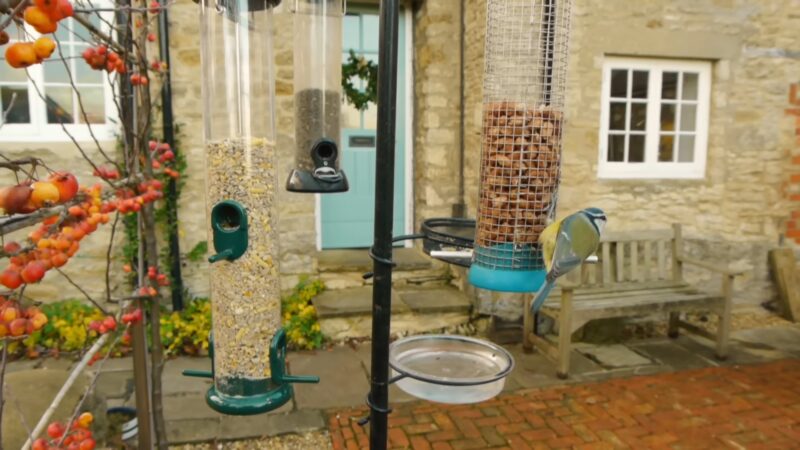
The seasons change, and so should your bird-feeding strategies. It’s like adapting your wardrobe for the weather.
Seasonal Adjustments
Keep an eye on the seasons and adjust your offerings accordingly. Offer high-energy food during the winter, and focus on fresh water during the summer.
Minimizing Collisions
Birds can be a bit like daredevil pilots. Make your windows more visible to avoid those mid-air collisions. It’s like installing runway lights for the birds.
Hygiene and Disease Prevention
The disease can spread among birds faster than gossip at a family reunion. Keep your feeders clean, and you’ll be like the healthcare professional for our feathered pals.
Conclusion
There you have it, your crash course in being the ultimate bird host! We’ve explored the benefits, ethical considerations, menu options, and even how to troubleshoot common problems. Bird feeding isn’t just a hobby; it’s a way to bring a bit of the wild world into our lives.
Related Posts:
- Four Main Feeding Mechanisms Of Animals - Dining in the Wild
- Banded Water Snake: Facts, Diet, Habitat - Secrets…
- Texas Rat Snake Facts, Diet, Habitat - The Lone…
- How Do Wild Horses Survive? - A Fascinating Study
- What Is the Difference Between a Coyote and a Wolf?…
- Do Not Try To Outrun A Bear - What To Do If You Meet…


